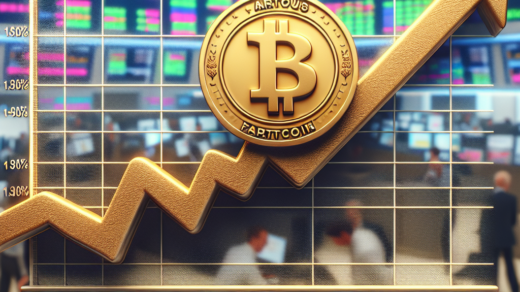“`html
Good Morning, Asia! Welcome to your daily dose of cryptocurrency insights and market movements. In this Asia Morning Briefing, we delve into the latest developments that are shaping the digital asset landscape, particularly focusing on Bitcoin (BTC) and its institutional demand. For those seeking a more comprehensive analysis of U.S. markets, consider checking out CoinDesk’s Crypto Daybook Americas.
Institutional Bitcoin Demand: A Closer Look
Fund manager Jeff Dyment from Saphira Group encourages investors to adopt a broader perspective regarding Bitcoin’s institutional demand. He asserts that the narrative surrounding institutional buying losing momentum is exaggerated, rooted in limited market snapshots. According to Dyment, the recent cooling of ETF and corporate purchases, including Michael Saylor’s Strategy which acquired only 16,000 BTC last month compared to December’s 171,000 BTC, does not indicate a decline in interest.
The Cyclical Nature of Institutional Buying
Dyment emphasizes that Bitcoin adoption occurs in cyclical waves rather than a steady increase. He argues that short-term fluctuations in demand are merely minor ripples against the backdrop of a broader rising tide of institutional engagement. Drawing attention to the addition of 51 new corporate BTC treasuries in the first half of 2025 alone—a figure that matches the total from 2018 to 2022 combined—he highlights a staggering 375% year-over-year increase in corporate BTC purchases. As of now, public companies collectively hold around 848,902 BTC, representing approximately 4% of the total supply.
Bitcoin ETFs: A Booming Market
Dyment further supports his thesis by pointing to the extraordinary growth in Bitcoin ETFs as a sign of deepening institutional participation. Notably, BlackRock’s IBIT fund has emerged as the largest Bitcoin ETF globally, amassing 699,000 BTC or more than 3.3% of the total supply, making it the fastest-growing ETF in history. In just 18 months since their rollout, U.S. spot ETFs have collectively captured about 1.25 million BTC, approximately 6% of the total supply.
Options Market Insights
Recent notes from QCP Capital, a Singapore-based fund, reveal that institutional investors are actively building exposure to Bitcoin. They are purchasing September $130K BTC calls and holding $115K/$140K call spreads. Despite current volatility levels remaining low, a decisive breach of the $110K resistance could trigger renewed volatility in the Bitcoin market. This underscores Dyment’s argument that while surface indicators may suggest stagnation, significant institutional interest continues to simmer beneath.
Stablecoins and Quantum Security
In other notable developments, BTQ Technologies has launched the Quantum Stablecoin Settlement Network (QSSN), a framework aimed at fortifying stablecoin issuance against potential threats posed by quantum computing. This initiative comes as the stablecoin market surpasses $225 billion, with lawmakers advocating for regulation focused on enhancing cybersecurity. The GENIUS Act currently progressing through U.S. Congress seeks to establish federal standards for fiat-backed stablecoins, promoting quantum-safe infrastructure.
Market Movements: Bitcoin and Beyond
As for the current market movements:
- Bitcoin (BTC): Bitcoin experienced a slight decline of 1.02% from July 6 at 22:00 to July 7 at 21:00, testing crucial support levels at $107,519.64. After facing heavy selling pressure, it managed to stage a V-shaped recovery, bouncing back from $107,800 as on-chain data indicated robust support clusters at $106,738 and $98,566 held by 1.68 million addresses, according to CoinDesk Research’s technical analysis.
- Ethereum (ETH): Ethereum rose by 1.67% amidst volatile trading, fluctuating nearly 3% between $2,529 and $2,604. Support at $2,530 proved resilient during the trading period, with institutional inflows exceeding $1.1 billion.
- Gold: Gold prices dipped due to a stronger dollar but rebounded on safe-haven demand fueled by tariff announcements, with forecasts suggesting a potential rally towards $4,000.
- S&P 500: The S&P 500 fell 0.79% to 6,229.98 as Trump announced new tariffs on imports from several countries.
- Nikkei 225: In contrast, Asia-Pacific markets generally rose, with Japan’s Nikkei 225 index gaining 0.36% despite tariff announcements from the U.S.
Conclusion: The Future of Bitcoin and Institutional Involvement
While short-term market fluctuations may cause some uncertainty, the overall trend of institutional demand for Bitcoin remains robust. As more corporations adopt Bitcoin and institutional products like ETFs gain traction, the long-term outlook for Bitcoin appears promising. Investors would do well to stay informed and consider the broader market trends rather than focusing solely on immediate price movements.
For more insights into cryptocurrency trading, check out our guides on how to buy Bitcoin and how to buy cryptocurrency.
“`
Meta Description: “Discover the latest insights on Bitcoin’s institutional demand and market trends in Asia. Learn why short-term fluctuations don’t reflect the bigger picture of growing corporate interest and the impact of Bitcoin ETFs. Stay informed with our comprehensive analysis.”







